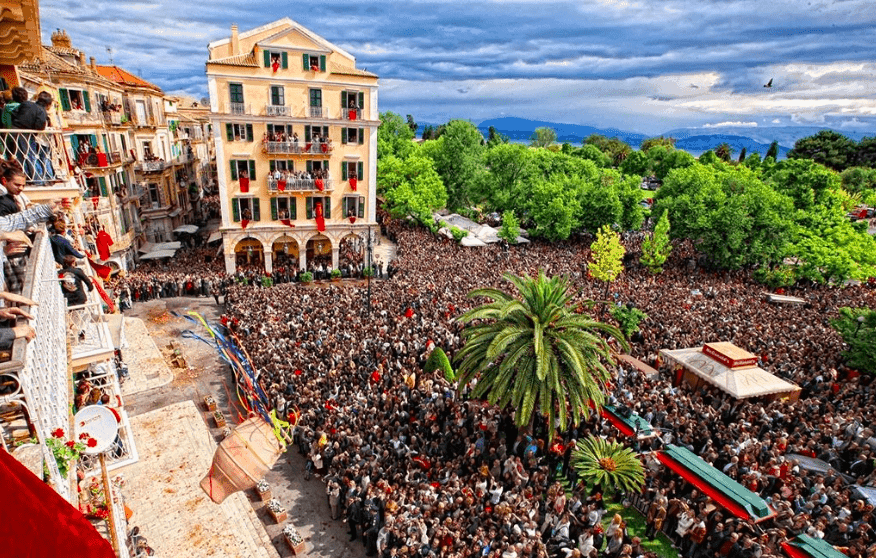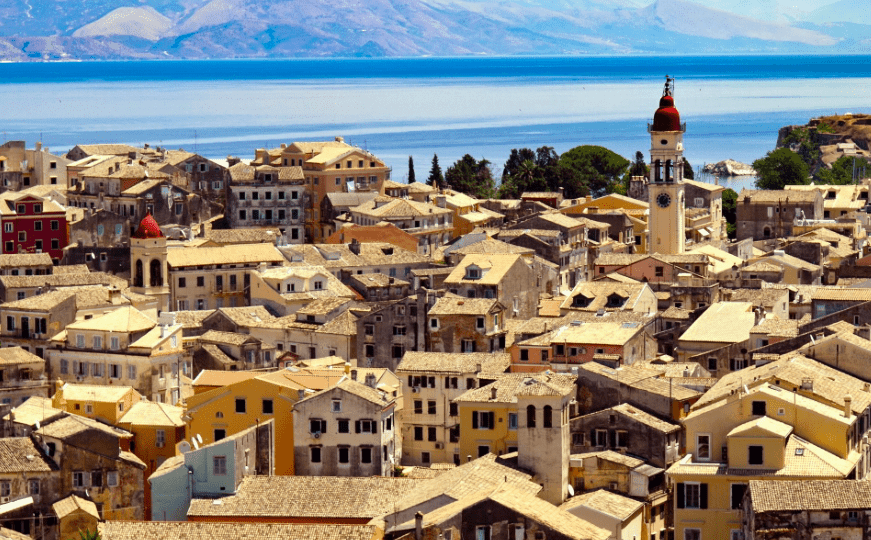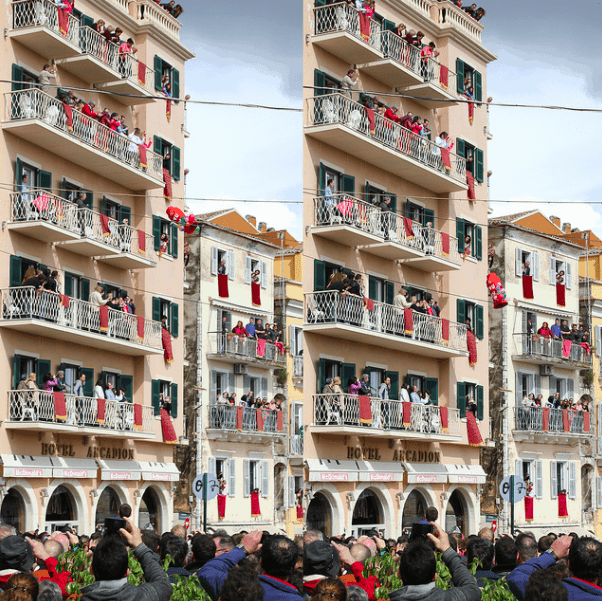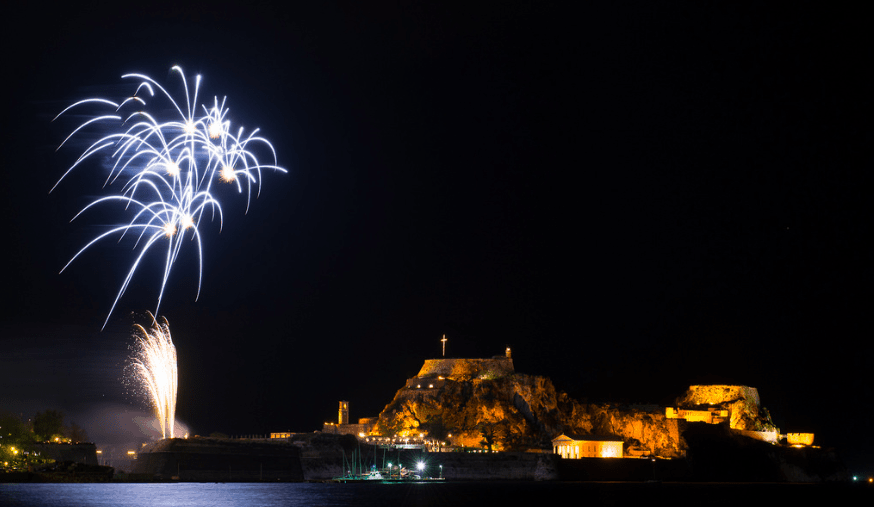It comes as no surprise that Corfu is again the top destination for the Easter holiday period in Greece in 2023.
Visitors from Athens, Thessaloniki, and every island, village, and town around Greece will be making their way across to Corfu to celebrate Holy Week after being locked up during the pandemic.

Many have said that if you only get one chance in a lifetime to visit Corfu, Easter week is the time to be there. Many visitors from overseas also arrive to see Corfu’s natural and cultural beauty come to life- as Greek Easter traditions are celebrated all around the island.

The Easter period begins in Corfu on Palm Sunday- At 11 am the procession of the holy body of Saint Spyridon takes place. It is a custom dating back to 1630, in memoriam of the relief of the island of the Plague, which, in 1629, had claimed many victims from the people of Corfu.
All 15 philharmonic bands of the island take part in that procession. At lunch, people enjoy the traditional dish of the day- stockfish or haddock with skordalia (garlic mash potato).
On the same night, the “Mántzaros” Philharmonic presents a solemn concert that beautifully evokes the melancholy mood of the Passion, or Holy, Week.
Good Monday- The Corfiots head to their local food stores in order to prepare for the celebrations to come. The distinctive aromas of baking “foyátsa” (a kind of brioche decorated with a red egg), and “mandoláto” (a nobles’ favourite macaroon made of almond and honey) can be smelt in the air!
Good Tuesday- In the afternoon, listen to the story of Mary Magdalene “hymned” at the city churches. At around 9.00 p.m. participate in the Music and Poetry Night with the theme: “From Golgotha to Resurrection” at the Peristyle of the Old Palace.
Good Wednesday- At noon you can attend the Holy Unction, then at 8.30 p.m. they fill up the Municipal Theatre to hear the Municipal Chorus singing ecclesiastical hymns of the Passion Week.

Maundy Thursday- The Service of the Holy Passion is held in the churches. In the Duomo, the Catholic Cathedral, 12 candles are lit and put out one at a time after the reading of each of the 12 Gospels. On the same day, the ringing of the first bell means it is time for the Easter eggs to be dyed red, a custom that symbolises the rebirth of life and nature.
Good Friday- Today, funeral bells wake up everyone on the island. Ecclesiastical ceremonies commemorate the Descent of Christ from the Cross. On this day, young girls decorate the Epitaphs, whose circumambulation begins early in the afternoon accompanied by choruses and bands.
The last Epitaph, and the most impressive one, makes its appearance at 10.00 p.m. It is the Epitaph of Corfu Cathedral.
Listen to the music, which gives an ecstatic dimension to this mournful night: the “Old” Philharmonic (Red) performs Albinoni's Adagio, the “Mántzaros” Philharmonic (Blue) plays Verdi's Marcia Funebre, and the “Kapodistrias” Philharmonic plays Mariani's Elegia Funebre and Chopin's Marche Funèbre.

Easter Saturday- At 6.00 am at the church of the Virgin Mary of Ksénon, the custom of the artificial earthquake re-enacts the earthquake that followed Christ’s Resurrection. At 11.00 am, the first Resurrection is announced.
People say “Christós Anésti” (Christ is risen) to one another. The response is “Alithós Anésti” (he has truly risen). Be prepared to experience a truly unique celebration: “Christós Anésti” is proclaimed against a background of loudly pealing bells and the joyful sounds of the bands as they parade through the streets.
People hurl clay pots from windows and balconies, which crash noisily on the streets below.
At night, there is a Catholic Mass of the Resurrection in Duomo and the Orthodox Resurrection Service at “Páno Platía” (Upper Square). Visitors will find themselves surrounded by thousands of lit candles on balconies and on every street.
The Resurrection of Christ is celebrated at 12.00 sharp with drum beats and fireworks.

After attending Service, all the villages and town squares are packed with music, dancing and festivities, celebrating Christ’s resurrection.
